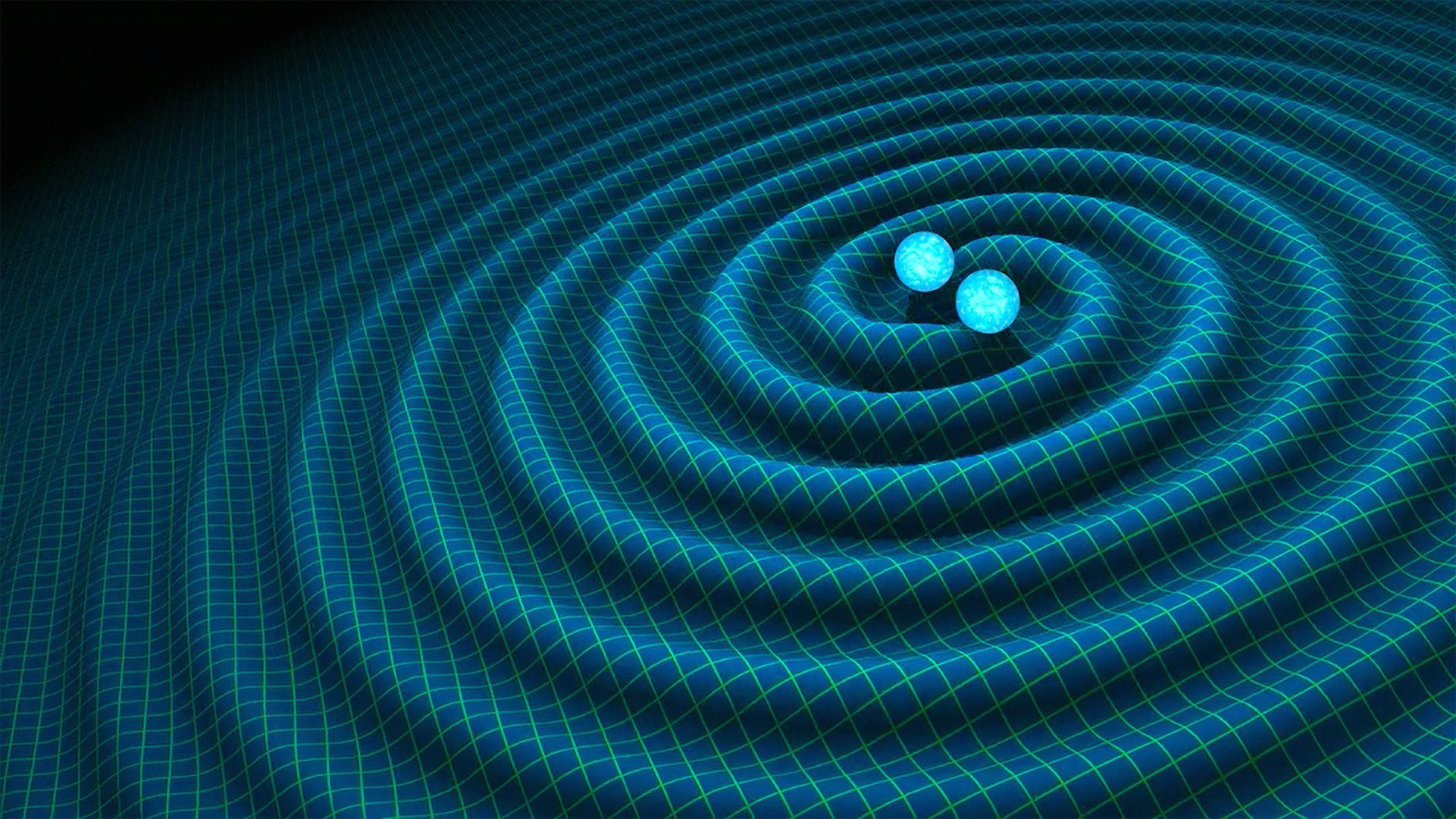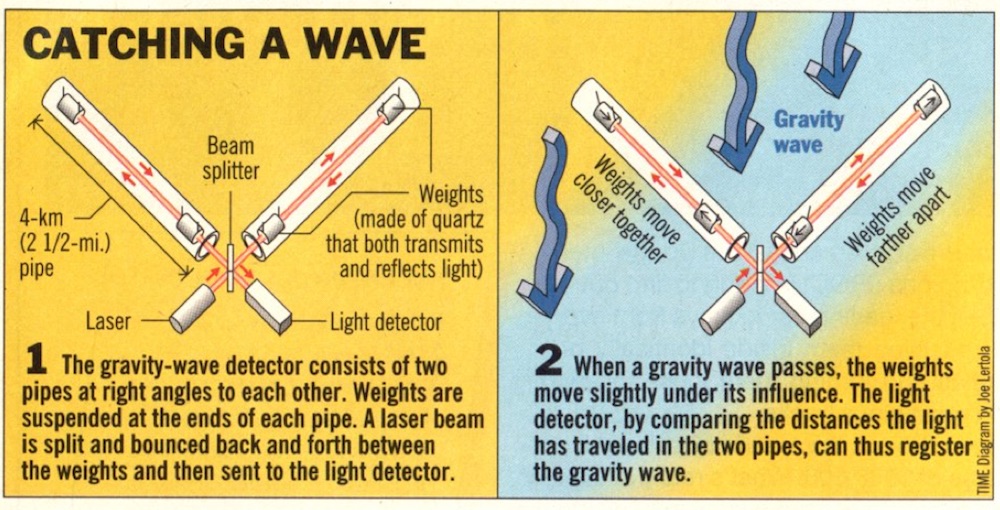
Scientists this week confirmed the existence of gravitational waves more than a century after Albert Einstein first proposed the theory as part of his theory of general relativity.
The finding has been decades in the making, as scientists developed methods to test the theory and TIME has chronicled the journey at each step. Here’s a look how we got to today’s research breakthrough:
1916: A year after finalizing the concept, Albert Einstein publishes his theory of relativity. As Stephen Hawking explained for TIME in 1999, “He showed that the increased speed of mass, whether a railroad train or a whole whirling galaxy, not only changes the mass, but alters the very yardsticks by which men seek to measure it.” One effect of that distortion should have been that an event in space—like, say, two black holes colliding—would cause waves of gravitational shifts that would spread out from the location of the event. But, though the gravitational waves were a logical result of his theory, he couldn’t prove it.
1955: Einstein dies before the gravitational waves part of his theory can be proved.
1969: Maryland physicist Joseph Weber builds two instruments to measure gravitational waves and places them in different locations in the United States. The devices detected waves, but Weber couldn’t identify the source.
1970: Weber shows that waves he detected passed through the center of galaxy—a key indicator of gravitational waves. However, the rate at which Weber was detecting waves raised some red flags among other researchers.
1973: Researchers cast doubt on Weber’s findings when they were unable to replicate his findings.
1978: Scientists discover further evidence of gravitational waves by studying the change of orbits of two objects in the constellation Aquila. After four years, they were able to measure a change that matched up with Einstein’s calculations of how the interaction between the two would be affected by giving off gravitational waves. “We don’t claim to have detected gravitational waves themselves,” said one scientist on the project, “but simply proved they exist.”
1990: Construction begins on the Laser Interferometer Gravitational-wave Observatory (LIGO) facilities that would eventually help confirm the existence of gravitational waves. The hope was that the new technology would not only measure the effects of gravitational waves, but also detect the waves themselves. Here’s how TIME explained the super-sensitive detector used by LIGO:

2014: Researchers captured evidence of a powerful distortion in radio waves that provide evidence for gravitational waves and the Big Bang, but the work would need to be replicated.
2016: Two facilities detect evidence of waves caused by the collision of two black holes, thus confirming Einstein’s theory.
More Must-Reads from TIME
- Cybersecurity Experts Are Sounding the Alarm on DOGE
- Meet the 2025 Women of the Year
- The Harsh Truth About Disability Inclusion
- Why Do More Young Adults Have Cancer?
- Colman Domingo Leads With Radical Love
- How to Get Better at Doing Things Alone
- Michelle Zauner Stares Down the Darkness
Write to Justin Worland at justin.worland@time.com